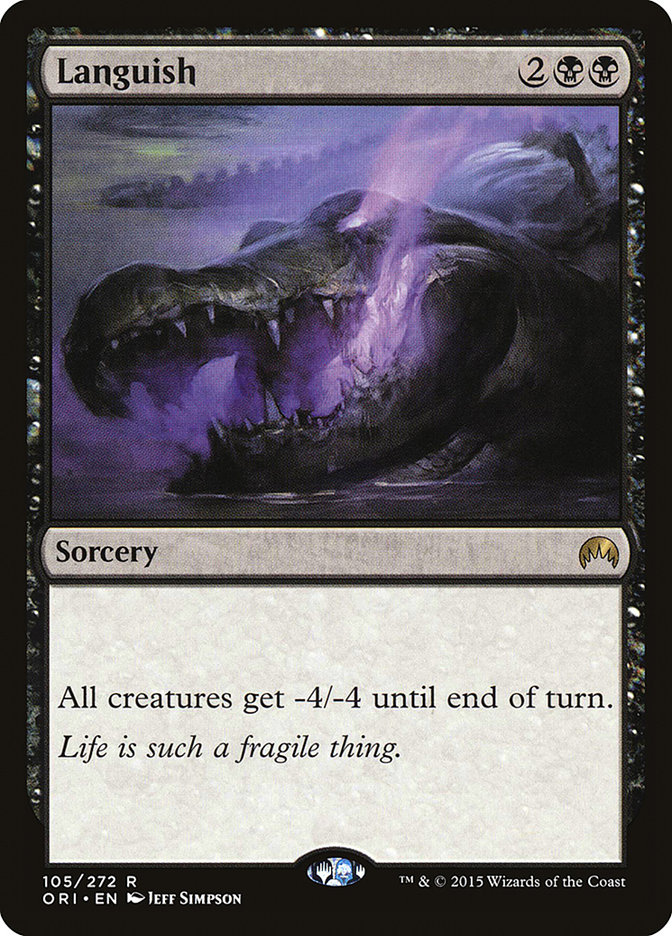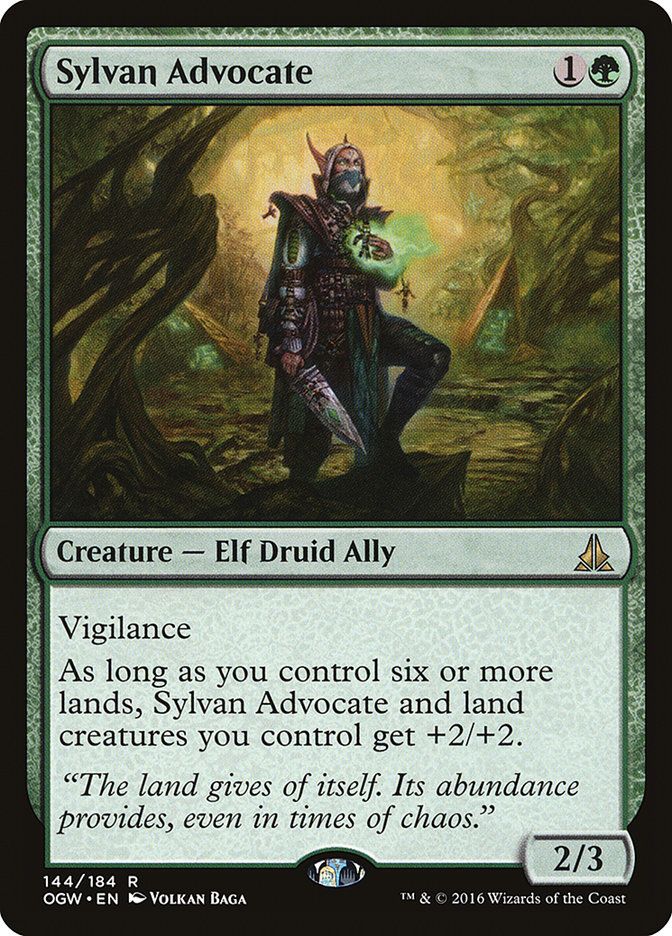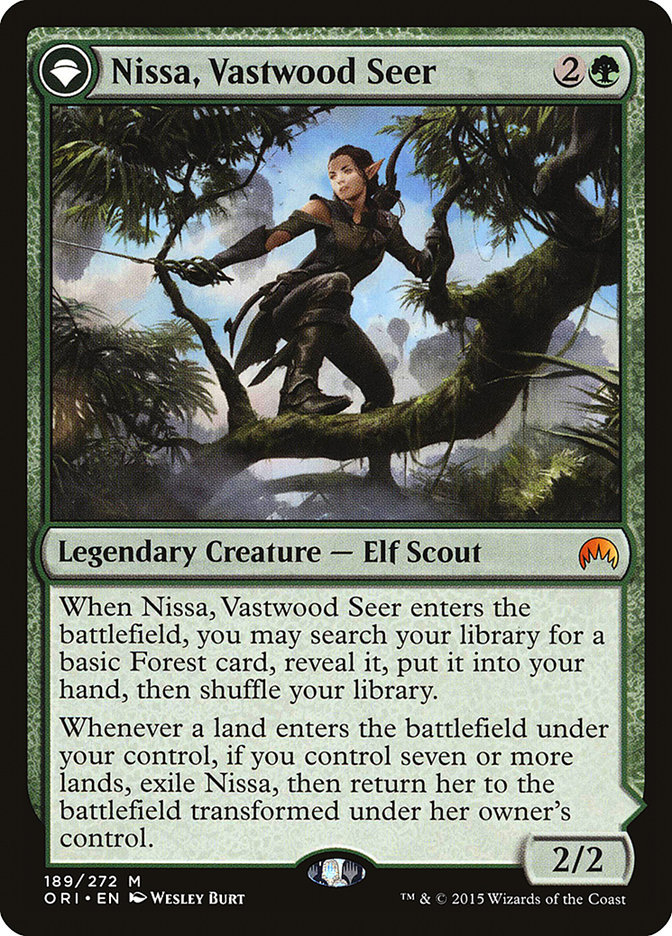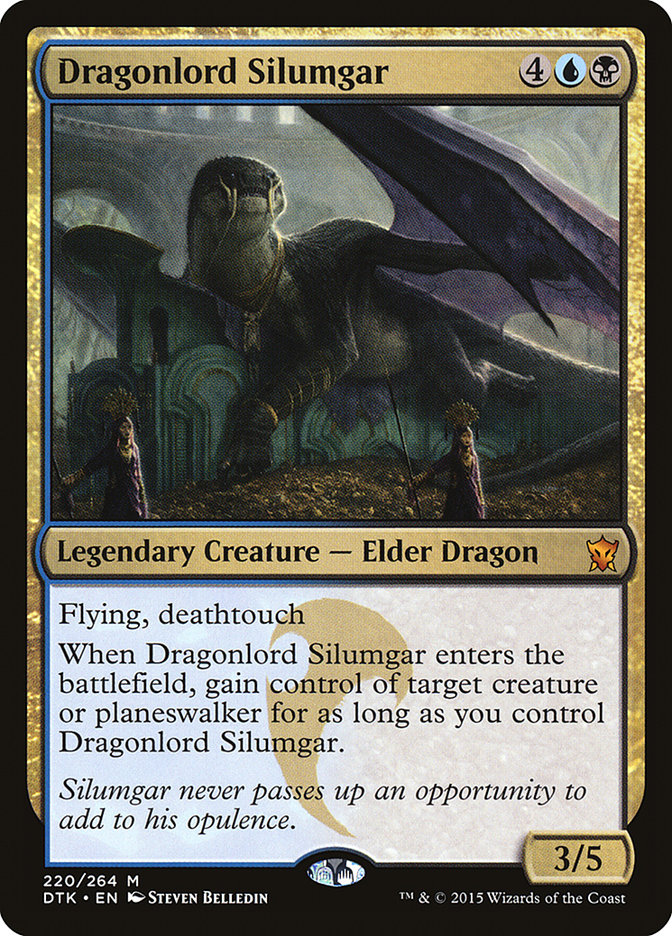 Collected Company and Cryptolith Rite decks. They come in all shapes and sizes.
Collected Company and Cryptolith Rite decks. They come in all shapes and sizes.
Creatures (28)
- 4 Elvish Visionary
- 4 Catacomb Sifter
- 3 Brood Monitor
- 1 Zulaport Cutthroat
- 4 Reflector Mage
- 4 Eldrazi Displacer
- 4 Duskwatch Recruiter
- 4 Loam Dryad
Lands (19)
Spells (13)

Team East West Bowl showed up with the first version of this deck to good results at #GPTOR. From there it became a mainstay in the format and almost invalidated the G/B Aristocrats deck Team Ultra Pro showed up with at #PTSOI. That doesn’t mean G/B Aristocrats isn’t played anymore, nor that every “Eldrazi” Cryptolith Rite deck is built like this one.
Creatures (30)
- 3 Nantuko Husk
- 4 Elvish Visionary
- 4 Catacomb Sifter
- 3 Brood Monitor
- 4 Zulaport Cutthroat
- 4 Eldrazi Displacer
- 4 Duskwatch Recruiter
- 4 Loam Dryad
Lands (16)
Spells (14)

Some players have opted out of playing the fourth color, missing out on the powerful Reflector Mage and replacing them with more combo driven pieces by upping the number of Zulaport Cutthroats all the way to four. This list existing makes it difficult to know how to sequence creatures in the early turns, since you might be trying to play around Reflector Mages that don’t even exist. A surprise Nantuko Husk in combat can also steal games that they wouldn’t otherwise if you thought you were up against a more normalized Four-Color Rite deck. What makes this even more frustrating from a metagamer’s perspective is that we aren’t even done yet! There’s a variant of this archetype that doesn’t even play the combo at all!
Creatures (28)
- 4 Elvish Visionary
- 2 Dragonlord Atarka
- 4 Eldrazi Skyspawner
- 4 Reflector Mage
- 4 Eldrazi Displacer
- 2 Sylvan Advocate
- 4 Duskwatch Recruiter
- 4 Loam Dryad
Lands (18)
Spells (14)
Sideboard

This is a version of the deck that Team CFB showed up to #GPNY with. Their results were not that great with the deck, but they did get the deck enough spotlight to perpetuate a following.
So that’s just one “archetype” in this format….
Next up is a much easier one to prepare for.
Creatures (14)
Planeswalkers (8)
Lands (10)
Spells (28)

G/W Tokens has been the most defining deck in the format ever since #PTSOI and for good reason. It’s a very proactive deck in a format that rewards being on the front foot. It plays some of the best rares and mythic rares the format has to offer. A planeswalker-based G/W deck does have some issues when falling behind, but cards like Archangel Avacyn and Tragic Arrogance can help the deck catch up.
Planeswalkers (9)
Lands (22)
Spells (29)

B/W Control has taken hold as the most successful control deck in the format and lets us discover one of the most important rules of the format. B/W Control hasn’t been alone in the battle to control this Standard format. Decks like B/G Seasons Past, Grixis Control, and Esper Dragons all tried their best to contain the format and ended up not being that successful. Sure, we have seen all three of them do well in the format, but only for short bursts and not winning once the masses got behind them.
B/W Control, on the other hand, has been a very successful deck for some time now and is the third-most-winning deck on Magic Online, just behind the two archetypes I’ve already discussed. So what differentiates B/W Control from the rest of them?
B/W Control is good because it exploits the tension between two of the pillars in this format.
Standard right now is very creature-heavy, which makes creature removal in Game 1 extremely important. B/W Control is the only “control” deck that gets to bypass all of that creature removal by winning the game with Gideon, Ally of Zendikar and Secure the Wastes fueling Westvale Abbey. Gideon, Ally of Zendikar’s normally not the best when it’s the first permanent on the battlefield against a creature deck, but the fear of Languish usually keeps opponents from overcommitting in the early-game. B/W Control doesn’t have to worry about most forms of removal in the format while also having a great way of taking over a game. Gideon, Ally of Zendikar wins a game quickly when left unchecked, but its velocity is magnified when backed up by a high density of removal.
These three archetypes make up a healthy percentage of the format and dictate most of what the rest of the format is doing right now. For example, a trend in many green-based decks has been emerging, and my only explanation for it is that it is the best combination of creatures to combat these three decks.
This combination of creatures is currently found in Sultai Midrange and Naya Planeswalkers.
Creatures (19)
- 2 Dragonlord Silumgar
- 3 Nissa, Vastwood Seer
- 2 Kalitas, Traitor of Ghet
- 4 Sylvan Advocate
- 4 Tireless Tracker
- 2 The Gitrog Monster
- 2 Duskwatch Recruiter
Lands (20)
Spells (21)

Creatures (16)
- 2 Dragonlord Atarka
- 3 Nissa, Vastwood Seer
- 1 Linvala, the Preserver
- 4 Sylvan Advocate
- 3 Archangel Avacyn
- 3 Tireless Tracker
Planeswalkers (7)
Lands (16)
Spells (21)

Now, these decks branch out from one another for specific things, but the creature cores are the same. The Three Amigos play a twofold role in both decks. In the early-game they develop a battlefield presence to be able to attack planeswalkers with the help of some well-timed removal. Tireless Tracker and Nissa, Vastwood Seer also make sure the deck keeps functioning into the mid-game, making the Sylvan Advocates “level up.” Once in the mid-game, all three of these threats scale up to become much more valuable. This allows the midrange decks to play a threat density high enough to not get run over by early pressure and planeswalkers but without weak topdecks when the game transitions into the later stages.
These creatures and the decks they are slotted into are also why we are seeing a dip in the win percentages of the other control decks. The format has evolved, and for some reason, green midrange decks have more card advantage than the other control decks can handle. B/W Control stands a chance against these decks due to how much virtual card advantage the deck can obtain, thanks to its planeswalkers, and because it has ways to finish games quickly before an opponent can start generating card advantage to get back into the game.
That’s the next major lesson I’ve been learning about this format. Games go long. All of these decks need to be able to deal with the early-game but also not fall too far behind later on. The midrange decks of the formats are all designed to be flexible, but they also have to find a way to close the door. Sometimes that is just letting the snowball of card advantage completely take over the game, but other times it’s simply attacking with an unanswered threat like Archangel Avacyn or Dragonlord Silumgar. They don’t always have the umpteenth removal spell.
Midrange decks need to value card advantage right now more than ever, as well as having access to cards that can help catch up when things are going poorly. This unique balance causes the games to go unorthodoxly long, since both decks have such a high density of creatures that gain card advantage and removal spells for said creatures. That’s what makes cards like Languish, Tragic Arrogance, and Quarantine Field so powerful right now.
That’s why we see Four-Color Rite still succeeding as an aggressive deck when Mono-White Humans has been falling off the map. Being able to keep up on the battlefield while also living through a Languish or two is extremely crucial at the moment. Collected Company is a great way to combat mass removal, while yet another version of Savannah Lion is not. This is exactly why I believe the Thalia’s Lieutenant archetypes have been gravitating towards a newer shell.
Creatures (25)
- 3 Knight of the White Orchid
- 4 Reflector Mage
- 3 Thraben Inspector
- 4 Thalia's Lieutenant
- 4 Tireless Tracker
- 4 Lambholt Pacifist
- 3 Duskwatch Recruiter
Lands (15)
Spells (20)

The combination of Thalia’s Lieutenant and Collected Company can be devastating, depending on what matchup you are playing. Even when against a deck with Languish, Collected Company is a great way to recover almost immediately and continue attacking. Sometimes this deck can build an army too large for Languish to take down, showcasing how situational Languish can be.
I’ve been playing around with this deck a little and can say it has some promise. Personally, it isn’t the way I want to attack this metagame, but I can see why it would appeal to some players. Bant Company appealed to me because of how great all of the creatures in the deck were alone, which allowed the deck to become more controlling after sideboard. I just loved how you could always try to win via inevitability with Bant Company, which is something this deck does not have.
That said, this is exactly what I would be playing if I were a fan of Mono-White Humans. I don’t think Mono-White Humans is well-positioned right now, and this is the perfect alternative for those looking to continue beating down with the Human creature type.
So that’s the metagame and why I think it looks the way it looks. I don’t exactly know how to digest all of this information right now, but this overview of the format makes me lean towards either playing B/W Control or Naya Planeswalkers this weekend at #GPMIN.
I’m a huge fan of playing the green midrange creatures alongside planeswalkers, but also want to try out a deck with four Gideon, Ally of Zendikar and four Languish. Both decks feel flexible enough to have a gameplan against most of the decks in the format, but both also have a proactive element, which is something I highly value when going to a Grand Prix.
It’s too early for me to know exactly what I’m going to play, given how early it is in my testing process, but I will for sure be bringing more information to the table next week as I begin my month of Standard testing. I will see you all next week when we prepare for #GPCostaRica with more data about this format!






